-
 Bitcoin
Bitcoin $115000
0.12% -
 Ethereum
Ethereum $3701
4.50% -
 XRP
XRP $3.081
2.99% -
 Tether USDt
Tether USDt $0.0000
-0.01% -
 BNB
BNB $767.9
1.45% -
 Solana
Solana $169.5
3.13% -
 USDC
USDC $0.9999
0.01% -
 Dogecoin
Dogecoin $0.2106
4.30% -
 TRON
TRON $0.3334
1.62% -
 Cardano
Cardano $0.7564
2.54% -
 Stellar
Stellar $0.4165
0.76% -
 Hyperliquid
Hyperliquid $38.75
0.25% -
 Sui
Sui $3.593
3.00% -
 Chainlink
Chainlink $17.08
3.59% -
 Bitcoin Cash
Bitcoin Cash $573.6
4.35% -
 Hedera
Hedera $0.2508
-0.84% -
 Avalanche
Avalanche $23.07
6.46% -
 Ethena USDe
Ethena USDe $1.001
-0.02% -
 Litecoin
Litecoin $120.8
8.17% -
 UNUS SED LEO
UNUS SED LEO $8.943
-0.32% -
 Toncoin
Toncoin $3.400
-5.60% -
 Shiba Inu
Shiba Inu $0.00001255
1.54% -
 Uniswap
Uniswap $9.908
6.32% -
 Polkadot
Polkadot $3.718
2.10% -
 Monero
Monero $303.0
-0.74% -
 Dai
Dai $0.9999
-0.02% -
 Bitget Token
Bitget Token $4.392
0.91% -
 Cronos
Cronos $0.1403
6.31% -
 Pepe
Pepe $0.00001076
1.13% -
 Aave
Aave $267.2
1.80%
What is an algorithmic stablecoin? How does it stay stable?
Algorithmic stablecoins maintain stability through supply adjustments and arbitrage, but face challenges like volatility and regulatory uncertainty.
Apr 16, 2025 at 08:28 am
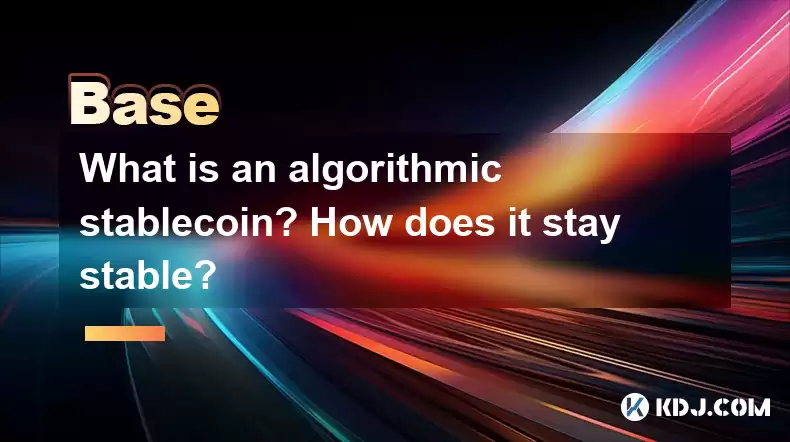
An algorithmic stablecoin is a type of cryptocurrency designed to maintain a stable value relative to a specific asset, usually a fiat currency like the US dollar, through the use of algorithms and smart contracts rather than being backed by traditional collateral such as other cryptocurrencies or physical assets. The stability of an algorithmic stablecoin is achieved through a variety of mechanisms that adjust the supply of the stablecoin in response to changes in demand, thereby maintaining its peg to the target asset.
Types of Algorithmic Stablecoins
Algorithmic stablecoins can be categorized into different types based on their mechanisms for maintaining stability. The two main types are rebasing stablecoins and seigniorage shares stablecoins.
Rebasing Stablecoins: These stablecoins adjust the total supply of tokens held by users automatically and periodically to maintain the peg. For instance, if the value of the stablecoin falls below the target peg, the protocol might increase the supply of tokens to each holder, thereby diluting the value per token and bringing it back to the peg. Conversely, if the value rises above the peg, the protocol might decrease the supply.
Seigniorage Shares Stablecoins: These operate by issuing new tokens or shares when the stablecoin's value is above the peg and buying back and burning tokens when the value is below the peg. This mechanism aims to balance supply and demand to maintain the stablecoin's value. Seigniorage shares can be thought of as a form of equity in the stablecoin's ecosystem, with holders potentially receiving dividends or other benefits.
How Algorithmic Stablecoins Maintain Stability
The stability of algorithmic stablecoins is maintained through a combination of economic incentives and algorithmic adjustments. Here are the key mechanisms involved:
Supply and Demand Adjustments: The core principle behind algorithmic stablecoins is the manipulation of the token supply to counteract fluctuations in demand. If demand decreases and the value of the stablecoin drops below the peg, the algorithm might reduce the supply to increase the value per token. Conversely, if demand increases and the value rises above the peg, the algorithm might increase the supply to bring the value back down.
Rebasing Mechanism: In rebasing stablecoins, the total supply of tokens is adjusted periodically. This can be done through a process called "rebasing," where each holder's balance is automatically increased or decreased. For example, if the stablecoin is trading below the peg, the protocol might increase the total supply by 1% for all holders, thereby diluting the value per token and bringing it closer to the peg.
Seigniorage Mechanism: Seigniorage shares stablecoins use a different approach. When the stablecoin's value is above the peg, the protocol can issue new tokens or shares, which are sold to investors. The funds raised from these sales can be used to buy back and burn tokens when the value falls below the peg, thereby reducing the supply and increasing the value per token.
Arbitrage Opportunities: Algorithmic stablecoins often create arbitrage opportunities that help maintain their peg. If the stablecoin trades below the peg, traders can buy the stablecoin at a discount and convert it into the target asset (e.g., US dollars) at the pegged rate, making a profit and reducing the supply of the stablecoin in circulation. Conversely, if the stablecoin trades above the peg, traders can sell the stablecoin and buy the target asset, increasing the supply of the stablecoin and bringing its value back down.
Examples of Algorithmic Stablecoins
Several algorithmic stablecoins have been developed, each with its unique approach to maintaining stability. Here are a few notable examples:
Ampleforth (AMPL): Ampleforth is a rebasing stablecoin that adjusts its supply daily based on the price of the token. If the price is above the target peg, the supply is reduced, and if it's below, the supply is increased. This mechanism aims to keep the value of each AMPL token stable over time.
Basis Cash (BAC): Basis Cash is a seigniorage shares stablecoin that uses a combination of three tokens to maintain its peg: BAC (the stablecoin), B shares (which entitle holders to a portion of the seigniorage), and bonds (which are used to buy back and burn BAC when the price is below the peg). This system aims to maintain the value of BAC at $1 through supply adjustments.
Terra (UST): Terra is an algorithmic stablecoin that uses a different approach called a "decentralized stablecoin protocol." It maintains its peg through a combination of supply adjustments and a sister token called Luna. When the value of UST falls below $1, users can burn Luna to mint new UST, increasing the supply and bringing the value back to the peg. Conversely, when the value rises above $1, users can burn UST to mint new Luna, reducing the supply of UST and bringing its value back down.
Challenges and Risks of Algorithmic Stablecoins
While algorithmic stablecoins offer an innovative approach to maintaining stability, they also come with several challenges and risks:
Volatility: Despite their design, algorithmic stablecoins can still experience significant volatility, especially during periods of high market stress. The algorithms may not always be able to adjust the supply quickly enough to counteract rapid changes in demand.
Complexity: The mechanisms used by algorithmic stablecoins can be complex and difficult for the average user to understand. This complexity can lead to confusion and mistrust, especially if the stablecoin fails to maintain its peg.
Regulatory Uncertainty: Algorithmic stablecoins operate in a regulatory gray area, and their legal status can vary significantly from one jurisdiction to another. This uncertainty can pose risks for both issuers and users of these stablecoins.
Dependence on Market Participants: The success of algorithmic stablecoins often depends on the actions of market participants, such as arbitrageurs and traders. If these participants fail to engage in the necessary arbitrage activities, the stablecoin may struggle to maintain its peg.
Use Cases for Algorithmic Stablecoins
Algorithmic stablecoins have a variety of potential use cases within the cryptocurrency ecosystem:
Payments and Transactions: Due to their stability, algorithmic stablecoins can be used as a medium of exchange for everyday transactions, both online and offline. They offer a more stable alternative to volatile cryptocurrencies like Bitcoin and Ethereum.
Decentralized Finance (DeFi): Algorithmic stablecoins play a crucial role in the DeFi ecosystem, where they are used as collateral for loans, as a unit of account for lending and borrowing platforms, and as a stable store of value for yield farming and other DeFi applications.
Hedging and Risk Management: Investors can use algorithmic stablecoins to hedge against the volatility of other cryptocurrencies. By holding a portion of their portfolio in stablecoins, investors can reduce their exposure to market fluctuations.
Cross-Border Remittances: Algorithmic stablecoins can facilitate faster and cheaper cross-border remittances, as they can be transferred quickly and at a lower cost than traditional financial systems.
Frequently Asked Questions
Q: Can algorithmic stablecoins be used as a store of value?
A: Yes, algorithmic stablecoins can be used as a store of value due to their stability. However, their effectiveness as a store of value depends on the robustness of the underlying algorithm and the ability of the protocol to maintain the peg over time.
Q: Are algorithmic stablecoins decentralized?
A: Many algorithmic stablecoins are designed to be decentralized, meaning they operate on blockchain networks without the need for a central authority. However, the degree of decentralization can vary, and some stablecoins may have centralized elements, such as governance or reserve management.
Q: How do algorithmic stablecoins compare to other types of stablecoins?
A: Algorithmic stablecoins differ from other types of stablecoins, such as collateralized stablecoins (which are backed by other cryptocurrencies or assets) and fiat-backed stablecoins (which are backed by traditional fiat currencies). Algorithmic stablecoins rely solely on algorithms and smart contracts to maintain their peg, whereas collateralized and fiat-backed stablecoins use external assets to ensure stability.
Q: What happens if an algorithmic stablecoin loses its peg?
A: If an algorithmic stablecoin loses its peg, the protocol will attempt to adjust the supply of tokens to bring the value back to the target peg. However, if the algorithm fails to do so, the stablecoin may experience significant volatility, and its value may deviate further from the peg. In extreme cases, this could lead to a loss of confidence in the stablecoin and a potential collapse of its value.
Disclaimer:info@kdj.com
The information provided is not trading advice. kdj.com does not assume any responsibility for any investments made based on the information provided in this article. Cryptocurrencies are highly volatile and it is highly recommended that you invest with caution after thorough research!
If you believe that the content used on this website infringes your copyright, please contact us immediately (info@kdj.com) and we will delete it promptly.
- Velo Universe, DEX, and DeFi Security: Navigating the Future of Decentralized Trading
- 2025-08-05 09:25:13
- Bitget Wallet Revolutionizes Solana with Gas-Free Transactions: A New Era for DeFi
- 2025-08-05 09:25:13
- Ozak AI, Crypto Boom, and ROI Potential: Is This the Next Big Thing?
- 2025-08-05 09:25:24
- Solana's ETF Hopes & the All-Time High Chase: Is SOL Set to Soar?
- 2025-08-05 09:25:24
- Coinbase's Brian Armstrong and the Art of Focused Work: A Deep Dive
- 2025-08-05 09:25:30
- Uniswap Price Prediction: Bullish Reversal on the Horizon?
- 2025-08-05 09:25:30
Related knowledge
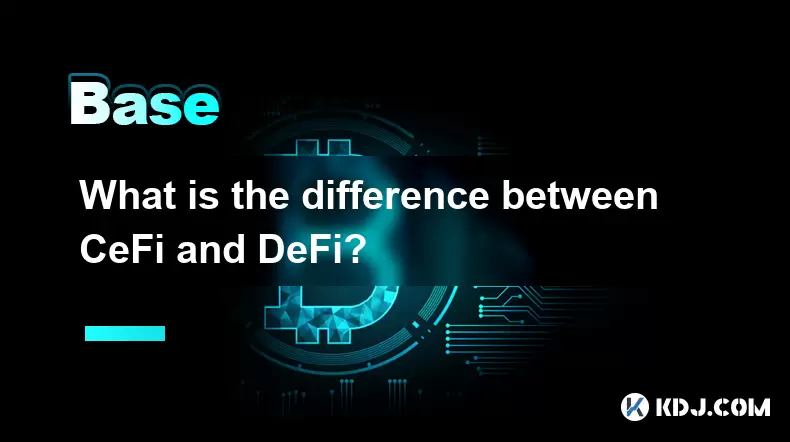
What is the difference between CeFi and DeFi?
Jul 22,2025 at 12:28am
Understanding CeFi and DeFiIn the world of cryptocurrency, CeFi (Centralized Finance) and DeFi (Decentralized Finance) represent two distinct financia...

How to qualify for potential crypto airdrops?
Jul 23,2025 at 06:49am
Understanding What Crypto Airdrops AreCrypto airdrops refer to the distribution of free tokens or coins to a large number of wallet addresses, often u...
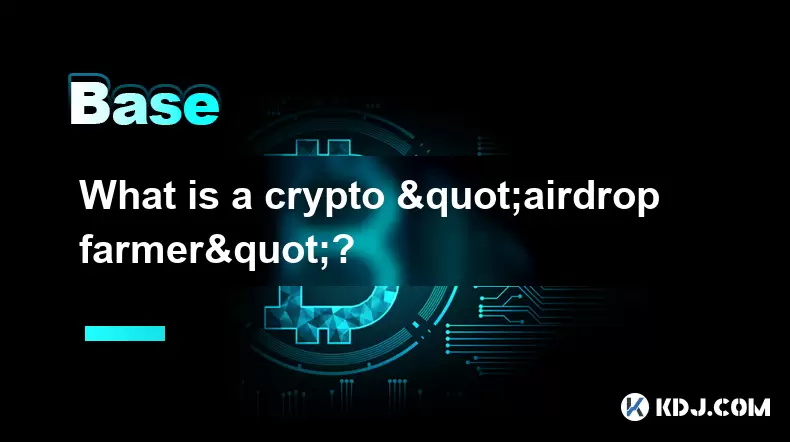
What is a crypto "airdrop farmer"?
Jul 24,2025 at 10:22pm
Understanding the Role of a Crypto 'Airdrop Farmer'A crypto 'airdrop farmer' refers to an individual who actively participates in cryptocurrency airdr...
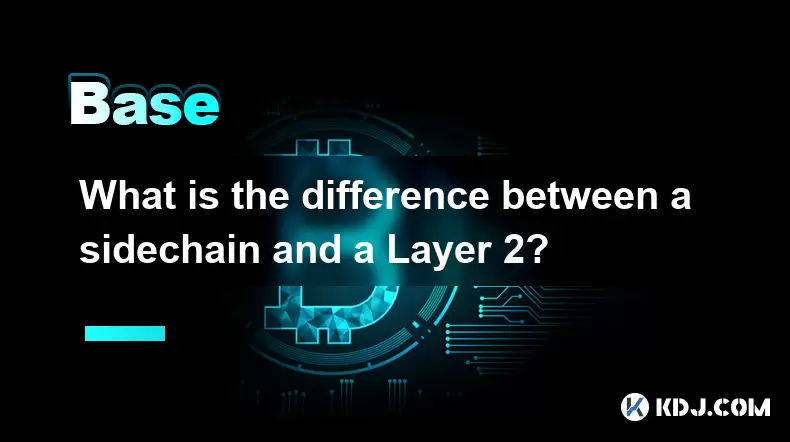
What is the difference between a sidechain and a Layer 2?
Jul 20,2025 at 11:35pm
Understanding the Concept of SidechainsA sidechain is a separate blockchain that runs parallel to the main blockchain, typically the mainnet of a cryp...

What is the Inter-Blockchain Communication Protocol (IBC)?
Jul 19,2025 at 10:43am
Understanding the Inter-Blockchain Communication Protocol (IBC)The Inter-Blockchain Communication Protocol (IBC) is a cross-chain communication protoc...
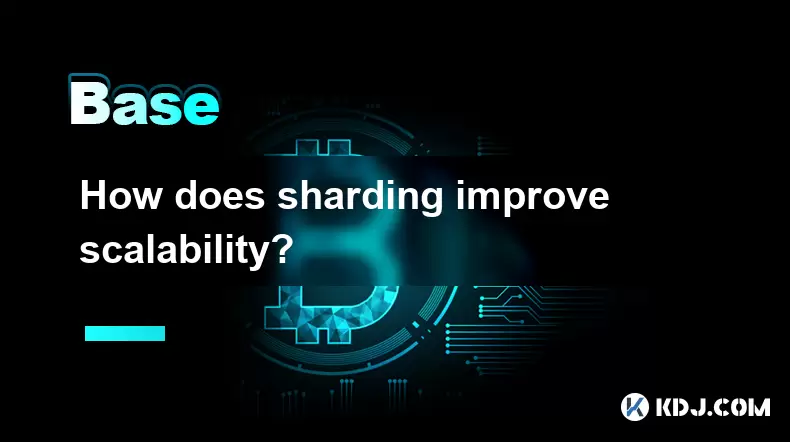
How does sharding improve scalability?
Jul 20,2025 at 01:21am
Understanding Sharding in BlockchainSharding is a database partitioning technique that is increasingly being adopted in blockchain technology to enhan...

What is the difference between CeFi and DeFi?
Jul 22,2025 at 12:28am
Understanding CeFi and DeFiIn the world of cryptocurrency, CeFi (Centralized Finance) and DeFi (Decentralized Finance) represent two distinct financia...

How to qualify for potential crypto airdrops?
Jul 23,2025 at 06:49am
Understanding What Crypto Airdrops AreCrypto airdrops refer to the distribution of free tokens or coins to a large number of wallet addresses, often u...

What is a crypto "airdrop farmer"?
Jul 24,2025 at 10:22pm
Understanding the Role of a Crypto 'Airdrop Farmer'A crypto 'airdrop farmer' refers to an individual who actively participates in cryptocurrency airdr...

What is the difference between a sidechain and a Layer 2?
Jul 20,2025 at 11:35pm
Understanding the Concept of SidechainsA sidechain is a separate blockchain that runs parallel to the main blockchain, typically the mainnet of a cryp...

What is the Inter-Blockchain Communication Protocol (IBC)?
Jul 19,2025 at 10:43am
Understanding the Inter-Blockchain Communication Protocol (IBC)The Inter-Blockchain Communication Protocol (IBC) is a cross-chain communication protoc...

How does sharding improve scalability?
Jul 20,2025 at 01:21am
Understanding Sharding in BlockchainSharding is a database partitioning technique that is increasingly being adopted in blockchain technology to enhan...
See all articles

























































































